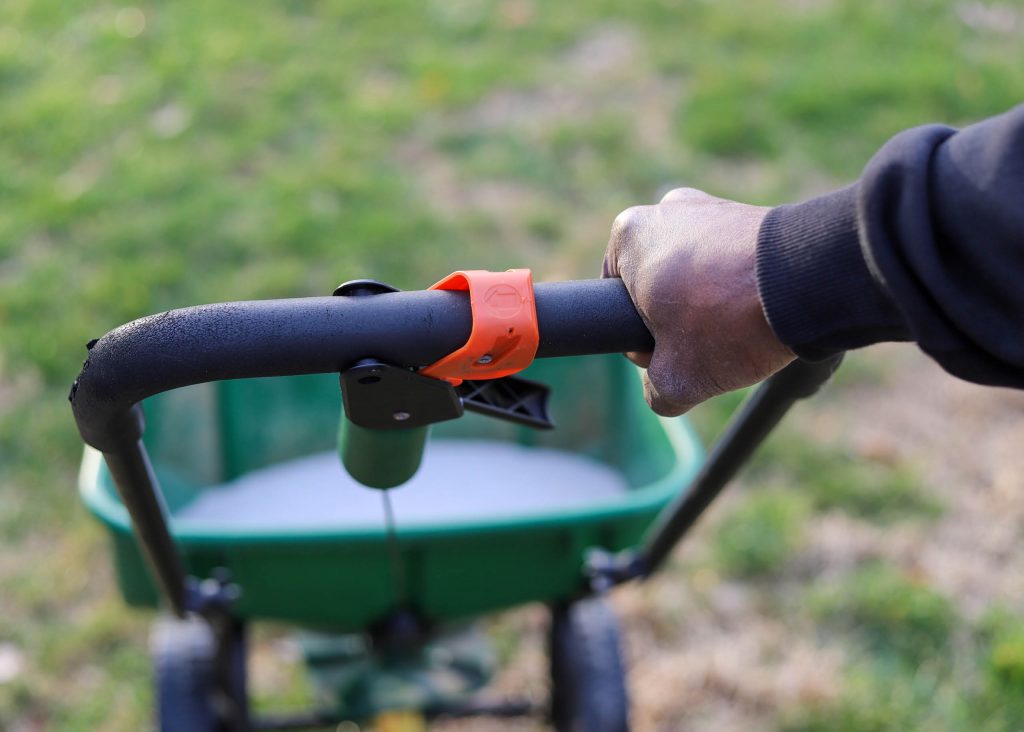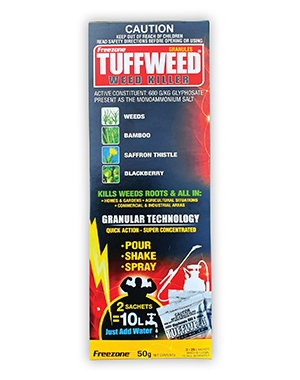How to Get Rid of Wild Turnip in Your Lawn
Wild Turnip (Raphanus raphanistrum) may also be known as Wild Radish, and is closely related to cultivated radishes and cabbages. However, unlike the vegetables it goes to ...

 Although recognised as the national flower of Scotland, thistles are in fact considered weeds in most parts of Australia. Like most broadleaf weeds, they present a problem for your home lawn, competing with grass varieties for nutrients, water, and sunlight. As well as being unsightly, thistles are commonly considered noxious weeds by many local councils, which means landowners have a responsibility to eliminate them from their properties.
Although recognised as the national flower of Scotland, thistles are in fact considered weeds in most parts of Australia. Like most broadleaf weeds, they present a problem for your home lawn, competing with grass varieties for nutrients, water, and sunlight. As well as being unsightly, thistles are commonly considered noxious weeds by many local councils, which means landowners have a responsibility to eliminate them from their properties.
In this article, we look at some of the best management approaches for banishing thistle weeds from your lawn.
 Originating from the Northern hemisphere, thistles are a herbaceous annual flowering weed that are known for their tall spiny stems and large, mainly purple, flowers. There are several invasive thistle species in Australia, but the most common in domestic environments are the Scotch Thistle (also known as the Heraldic Thistle), and the Spear Thistle.
Originating from the Northern hemisphere, thistles are a herbaceous annual flowering weed that are known for their tall spiny stems and large, mainly purple, flowers. There are several invasive thistle species in Australia, but the most common in domestic environments are the Scotch Thistle (also known as the Heraldic Thistle), and the Spear Thistle.
Thistle weeds reproduce primarily via seed (although it has been known to spread locally by root fragments transported on machinery). The seeds possess fine hairs that can attach to clothing or animals, helping to spread the plant.
Germination of thistle weeds can occur at any time of the year, but will predominantly do so in autumn, after rain. These plants will grow stems through spring, flower, and seed in summer, and then die. These are annual plants. Some seeds will germinate through late-winter and Spring, forming a rosette that grows over summer, autumn, and winter, before flowering and setting seed the following summer. These are biennial plants.
Thistles thrive in temperate, Mediterranean-style climates, with dry hot summers and cool winters, which means that they tend to grow well in the Southern states. They prefer fertile, well-drained soils, with high levels of nitrogen. Thistles grow best in annual rainfall areas of 500 to 850mm. They will rarely grow in waterlogged soils.
 When in flower, thistles are easy to identify. Mature thistles stand approximately 1.2m tall and feature a distinctive purple flower head.
When in flower, thistles are easy to identify. Mature thistles stand approximately 1.2m tall and feature a distinctive purple flower head.
The plant initially grows from a flat rosette of grey-green leaves that are toothed with spiny edges. These leaves are covered in fine, downy hairs, giving them a woolly appearance.
As thistle weeds grow, a tall main stem will emerge, from which the flower will develop. These flower heads can grow up to 60mm in diameter, with spiky modified leaves, known as bracts, at the base of the flower. Flowers appear in late-spring early-summer.
If you have only a few thistles in your garden, hand chipping (using a hoe to remove the plant) is an effective management approach. You should try to remove as much of the plant’s taproot as possible, to avoid regrowth. Slashing or mowing is not usually effective as plants develop new growth from the base. Immature seed heads left lying on the ground may also contain viable seed that can germinate and perpetuate the problem.
 Thistles respond well to treatment by chemical herbicides. Herbicide use is most effective in autumn, when Thistles are at seedling stage, before the flowering stem appears. While they can still be sprayed up to flowering, treatment at this later stage involves higher application rates, presenting greater risk to your surrounding lawn.
Thistles respond well to treatment by chemical herbicides. Herbicide use is most effective in autumn, when Thistles are at seedling stage, before the flowering stem appears. While they can still be sprayed up to flowering, treatment at this later stage involves higher application rates, presenting greater risk to your surrounding lawn.
Thistles tend to become dormant in winter, making them much less susceptible to herbicides. Spraying is best held off until the onset of spring.
Thistle weed control is best achieved through an integrated weed management program, incorporating a combination of strategies aimed at preventing thistle seeds from germinating in the first place.
Start by maintaining a healthy lawn to encourage growth and outcompete any weeds. Thistles will often take hold in bare patches, so try to maintain good ground cover throughout the year to reduce the chances of seed germination.
 To encourage grass vigour and growth, you should plan to fertilise your lawns at least twice yearly, in autumn and spring. Select products that are suited to the type of lawn you have. You should also water your lawn regularly, especially during dry seasons, to maintain the health of your grass and soils.
To encourage grass vigour and growth, you should plan to fertilise your lawns at least twice yearly, in autumn and spring. Select products that are suited to the type of lawn you have. You should also water your lawn regularly, especially during dry seasons, to maintain the health of your grass and soils.
For larger infestations of thistle weeds, such as in agricultural settings or roadsides, it may be appropriate for the use of biological control agents. This involves the controlled release of specific insect populations that are known to destroy the thistle plants as a way of reducing plant numbers. Insect selection will depend on the thistle variety, and surrounding ecosystem.
Products suitable for controlling thistle weeds include:


Freezone TUFFWEED is a super concentrate selective herbicide in a dry granular formulation that combats the toughest Thistles. Ensure your lawn variety is suitable for application prior to use.
SHOP NOWThistle weed control can be a challenge but following these simple tips will help you to manage them effectively. Using a combination of methods, including herbicide application, cultural practices, and biological control agents, you can keep your lawn looking healthy and weed-free. For larger infestations, seek professional assistance.
For more information on leading herbicide treatments for your home lawn, visit myhomeTURF’s online store.